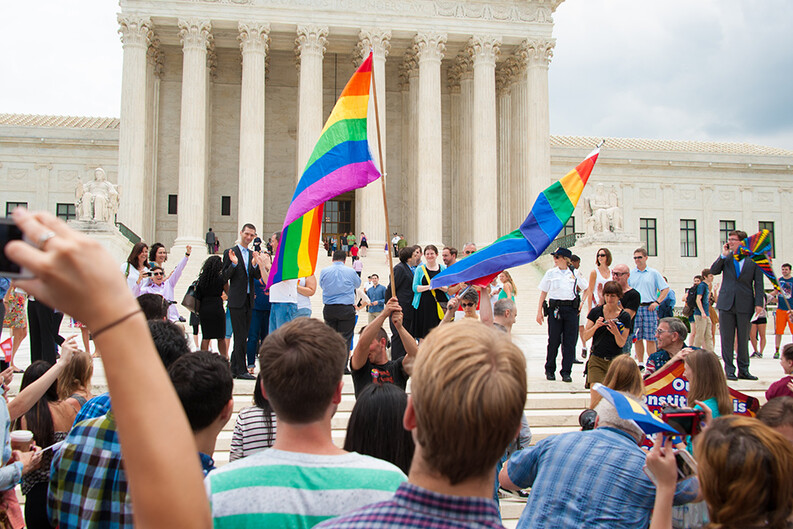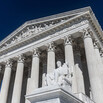From Outlaws to In-Laws

For decades, John A. Garver Professor of Jurisprudence William Eskridge ’78 has advocated for LGBTQ rights through his scholarship and as a national expert on sexuality, gender, and the law.
In his new book, Marriage Equality From Outlaws to In-Laws, Eskridge and coauthor Christopher R. Riano provide a comprehensive examination of the equal marriage movement — spanning from 1967 until 2017, after the Supreme Court’s landmark decision from 2015 in Obergefell v. Hodges made marriage equality the law of the land.

Eskridge and Riano dispel the notion that only gay men and lesbians propelled the equal marriage movement forward, writing that straight women, transgender and nonbinary people, and people of color were major voices and leaders in the fight. The first lawsuit in the country seeking same-sex marriage rights, they note, was filed by a transgender person in the early 1970s. And the first federal lawsuit was filed by Donna Burkett and Manonia Evans, a black couple in Wisconsin.
In the book, Eskridge and Riano gather more than 500 interviews with famous as well as unheralded marriage equality advocates to provide a complete picture of the movement and its setbacks, like the Supreme Court’s 1986 decision in Bowers v. Hardwick, which the authors argue helped to invigorate the gay rights movement. The decision, along with the AIDS epidemic, “motivated discussion of a new family law concept, domestic partnership, and then a fresh look at the marriage issue,” they write.

Although marriage equality may now seem like an inevitability, for decades, many Americans felt threatened by the possibility of gay marriage. Eskridge and Riano write that “in part because of a decades-long government campaign of misinformation, Americans believed homosexuals were hedonistic, selfish, and predatory — traits that were antithetical to those found in a self-giving marriage and altruistic family.” Indeed, a central theme of the marriage equality movement was to refute that stereotype about gay people and to demonstrate how their goals and lives were very much those of their straight neighbors.
In a post-Obergefell age, the marriage conversation continues on new frontiers affecting the family, as wedding vendors claim religious liberty exceptions and married gay couples confront issues surrounding surrogacy, adoption, and foster care, among other issues.
Riano is a lecturer in constitutional law and government at Columbia University. Eskridge has spent his career working for LGBTQ rights. He filed a critical amicus brief that anticipated almost all the arguments, and many of the examples, in the landmark Bostock v. Clayton County 6-3 decision, which ruled on June 16, 2020 that a federal civil rights law protects gay and transgender workers from workplace discrimination. Professor Eskridge’s primary legal academic interest has been statutory interpretation, which was a central part of his amicus brief argument and a deciding factor in the majority opinion; his work was liberally cited in both dissenting opinions. In 1991–95, Eskridge represented a gay couple suing for recognition of their same-sex marriage. Since then, he has published a field-establishing casebook and three monographs, filed numerous amicus briefs in key cases before the Supreme Court, and written dozens of law review articles articulating a legal and political framework for proper state treatment of sexual and gender minorities.


